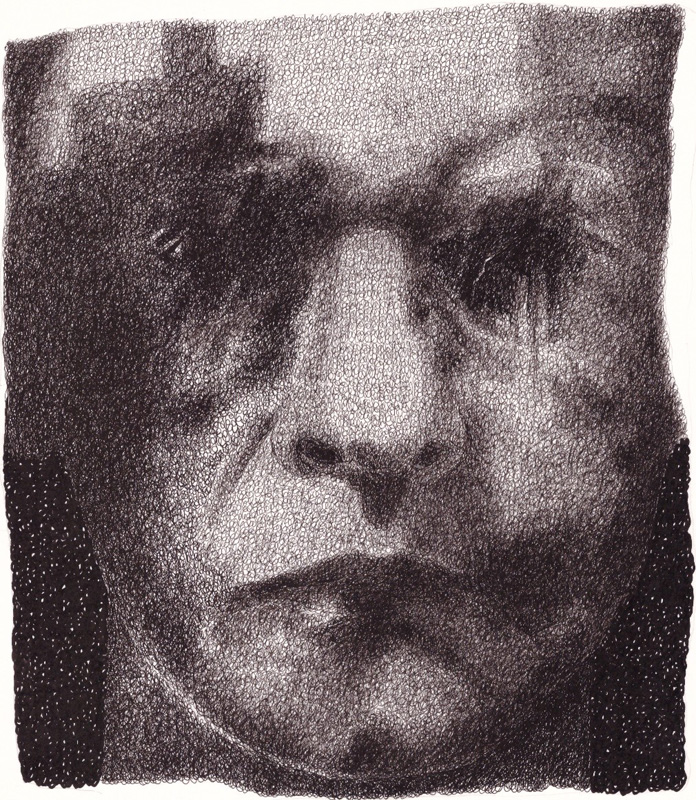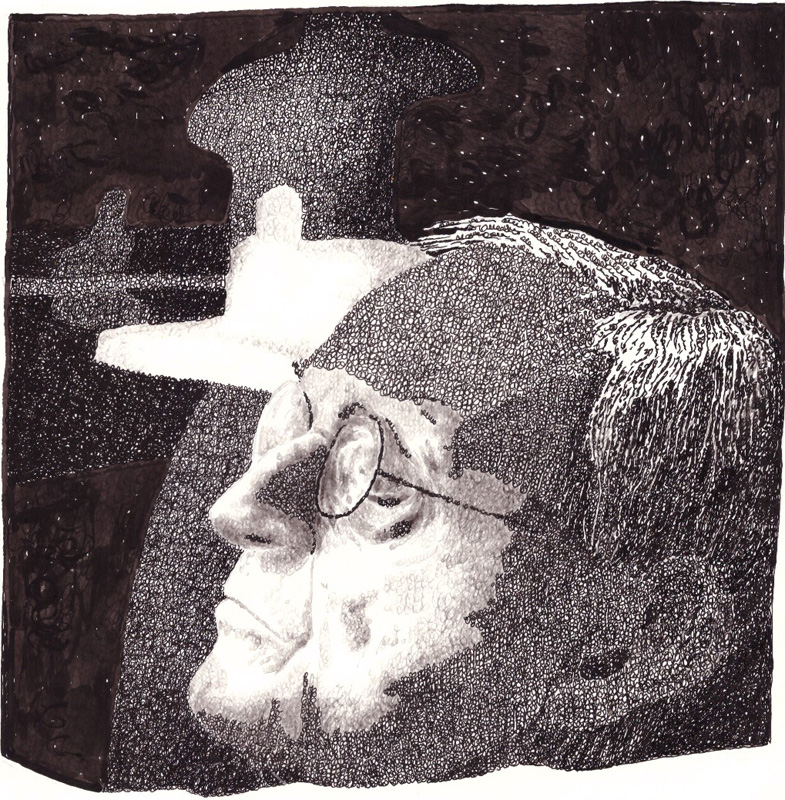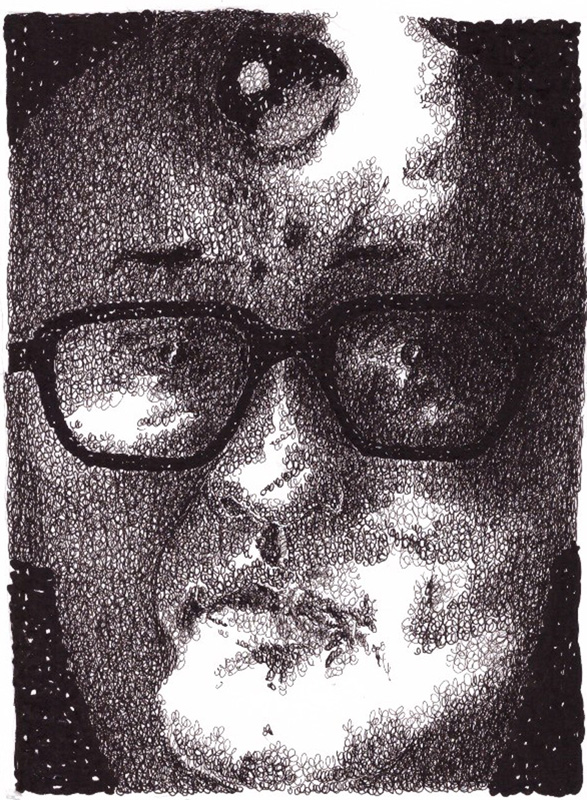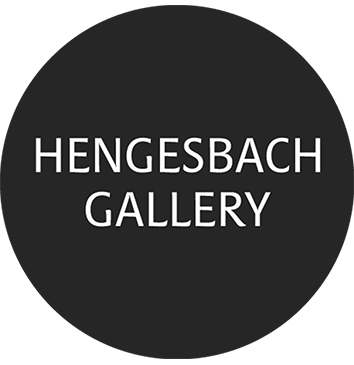Georg Cadora
February 8 – March 2, 2016
Can the work of great deceased poets be animated in such a way that impressions of the impulsiveness, density, and magic of their texts are absorbed and infused into the shaping of their faces, so that the intensity of their work becomes inscribed in their features? This is the central concern of Georg Cadora’s graphic oeuvre. He has developed a unique technique for this purpose. His drawing instrument never lifts from the paper; instead, it creates varying densities, speeds, and contrasts through continuous, delicate, circular movements. It is as though one’s own reading experience translates into a nervous pattern of time, movement, and writing. The reading eye transforms its textual penetrations into a freely drawn-written motion. At its core, this movement is a simple curl or loop that reaches outward and then returns to its origin, touching it. But in returning, it has gained momentum, which propels it forward.
In the early writing attempts of children, this simple movement is bound to the horizontal lines of a school notebook. With Cadora, it is unleashed, freed from directional constraints. The movement is detached from any orderly alignment. Instead, it loops over itself, creating a thicket in which the linear origin and progression disappear entirely. This mode of drawing, in its processual nature, its lack of direction, its continuity and seeming aimlessness, stands in opposition to classical drawing techniques, which employ lines to convey clear direction, structure, and articulation, and where the stroke repeatedly lifts from the paper to form air-lines.
In a metaphorical sense, this drawing movement enacts what happens in a literary text: the starting point of a text is familiar words. These words are strung together by the poet—a process that is initially linear. But from this linear act, through the selection from our vocabulary and the syntactic combination of words, emerges a weave that breaks with linearity and introduces multiple layers. The differing densities and arcs of tension on these layers distinguish poetry from ordinary speech and writing. Densities and contrasts are especially well rendered in black. Almost all of Cadora’s works consist solely of the brightness of the paper and the density modulations created by a fine pencil or delicate nib and black ink. Within this dynamic, he unfolds the texture of his reading experiences.
A face consists of an outline, of the individual features tied to our sensory perception—eyes, nose, mouth, ears—and the modulation of the skin that connects them. In German, we speak of “Gesichtszüge” (facial features or traits). It seems intuitive to begin the depiction of a face with the outline or facial features. Cadora, by contrast, focuses in his drawing technique on the most elusive aspect: the facial features. Yet he does not model them directly; instead, he lets them emerge indirectly from his meandering networks of lines. Since the individual features do not need to coexist in peaceful harmony, he sometimes allows different layers to overlap in his faces, enhancing the multifaceted nature of the human visage.
In the process of circling through work and face, Cadora allows himself great freedom. The faces are rarely complete, and one poet’s head can never be directly compared with another’s, because the densities, arcs of tension, and clearings in each drawing vary too greatly. The inner dynamics and the specific ruptures within the faces are also markedly different. Cadora’s faces are not inviting. Although we are familiar with the physiognomy of many poets through photography, his drawings make it clear that we cannot truly grasp or appropriate these faces—they must remain at a distance. Sometimes a face fades almost entirely into darkness, with only the eyes faintly discernible. In other works, the face merges with its surroundings, frays at the edges, breaks off, or splits into disparate halves.
Cadora’s aim is not to achieve a photographic likeness of a face, but to make perceptible—through his swirling loops of line—the poetic force, the unfathomable and incomprehensible nature of the poetic act of creation.

Ink on paper, 22,6 x 19,5 cm

Ink and pencil on paper, 23,7 x 20 cm

Ink on paper, 22,5 x 19,6 cm

Ink and pencil on paper, 29,7 x 21 cm
